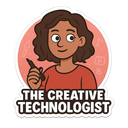building for the web
Build a website using HTML and CSS.
Your Learning Journey
Writing Your First Basic HTML Document
Using Tags to Define Headings, Paragraphs, and Lists
Using IMG and A Tags to Add Media and Navigation
Applying Basic Styles Using an Internal Stylesheet
Using External CSS for More Precise Styling
Building a Two-Page Site with External CSS
Module introduction
Have you ever wondered how your favourite websites are built? It’s not magic, it’s a creative skill that you are about to learn. In this module, you will take your first steps into the exciting world of web development, moving beyond drag-and-drop tools to build websites from scratch using the actual languages of the web. This journey will take you from the basics of structuring a webpage with HTML to being able to confidently style and design it with CSS. By the end of this module, you will have the power to create your very own multi-page website, bringing your ideas to life on the internet for the world to see.
Why does this module matter?
Every day we use the web to learn, shop, connect, and play. Understanding how websites are built is a fundamental digital skill in the 21st century. It's not just about becoming a web developer; it's about understanding the digital world you live in, being able to express yourself creatively online, and developing a powerful problem-solving mindset that is valuable in any field.
1
For you
This module will help you develop several key computing personas:

The Implementer: This is your chance to become a true builder. You will learn to use HTML and CSS, the practical languages needed to translate a design idea into a functional, live webpage. This persona is all about the craft of writing code to create digital experiences.

The Creative Technologist: Web design is an art form. You'll tap into this persona by focusing on how to make your websites not just work, but look great. You'll learn how to use CSS to control colours, fonts, and layouts to create a compelling and engaging experience for your audience.

The System Integrator: A website has two key parts: its content and its presentation. This persona focuses on how these two systems interact. You'll learn the core principle of modern web development: keeping your HTML (structure) separate from your CSS (style) to create websites that are efficient, easy to manage, and work well.
2
For your future
The skills you learn in this module are the starting point for many exciting and in-demand careers. One of the most direct pathways is to become a Front-End Web Developer.
Career focus: A Front-End Developer is responsible for creating the part of a website that a user sees and interacts with. They take a design and use HTML and CSS to build a responsive, accessible, and visually appealing user interface.
Key Skills: This module builds the two most essential skills for this career: using HTML to structure content and using CSS to control the visual presentation and layout of webpages.
Interesting facts: The first-ever website was published in 1991, and you can still visit it today! It was created by Tim Berners-Lee, the inventor of the World Wide Web. Also, around 75% of people judge the credibility of a business based on its website's design, showing how important a Front-End Developer's job is.
Our Learning Journey
Our journey will begin by deconstructing the web, learning how to structure content with the fundamental building blocks of HTML. You will learn to add headings, paragraphs, lists, images, and the hyperlinks that connect the web together. Then, we will dive into the creative world of Cascading Style Sheets (CSS), discovering how to add colour, control fonts, and build sophisticated layouts. You will learn the crucial professional skill of separating your content from your presentation. Finally, you will bring all these skills together to plan, design, and build your own personal two-page website from scratch.
Last modified: November 12th, 2025





















